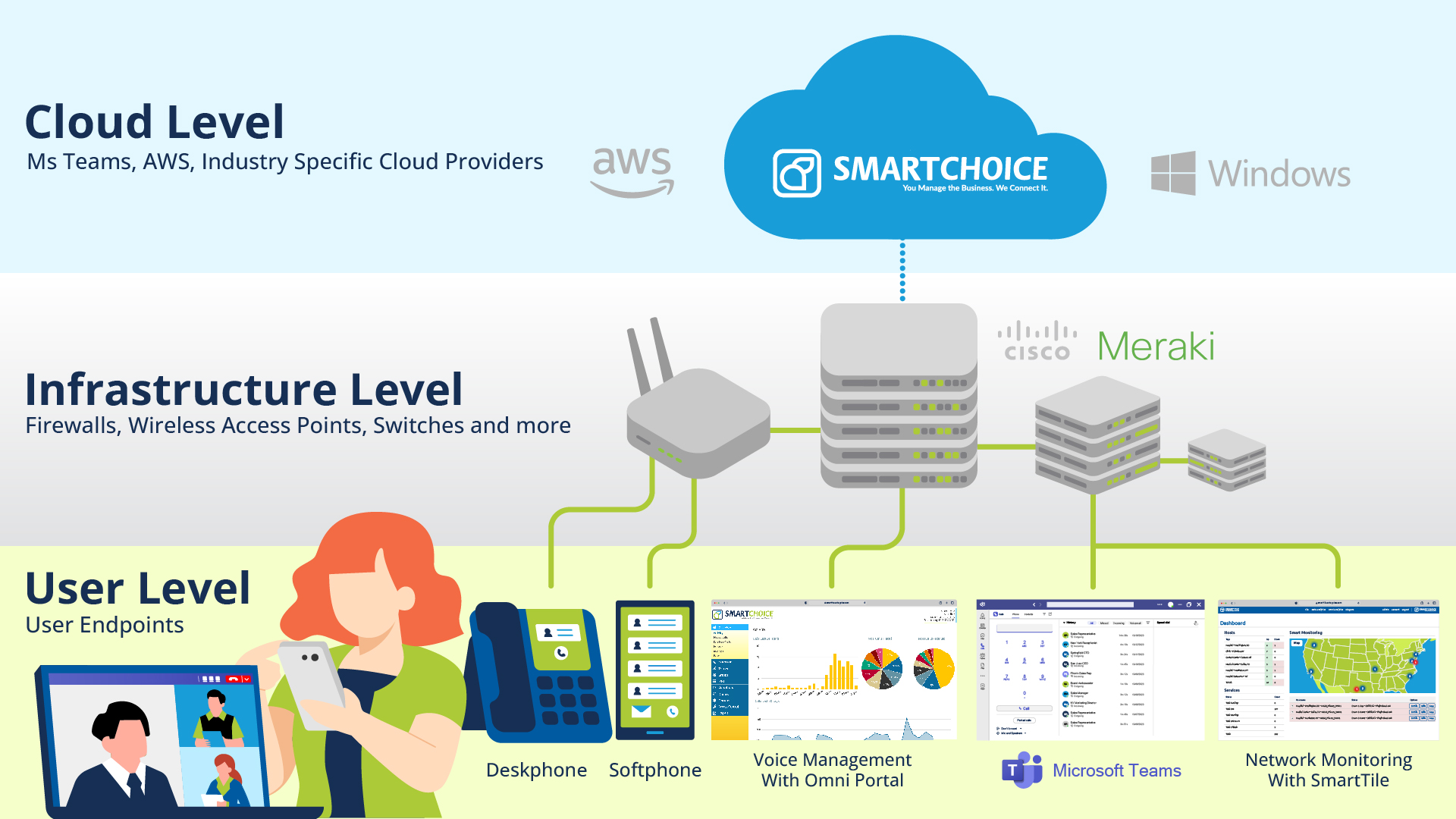Microsoft Teams versus Zoom
Microsoft Teams and Zoom are both industry leaders in video conferencing, but which one is most suitable for your business?

Video conferencing platforms have become vital for businesses trying to stay afloat during the pandemic and continue supporting increasingly distributed workforces. But not only have they proven invaluable over the past year – they will also continue to support remote working and international business and help maintain strong relationships with customers and employees alike.
Having largely replaced Skype for Business and Cisco in many enterprises, Microsoft Teams and Zoom have become industry leaders in the unified communications-as-a-service (UCaaS) space. They are both very competent platforms that encompass video and voice conferencing, as well as integration options with business phone systems. That said, there are several key differences that you need to consider before making the choice. In some cases, it even makes sense to use both, particularly if you can deploy them as a single unified solution.
Here are the main considerations in the Microsoft Teams versus Zoom debate:
Pricing
Both Microsoft Teams and Zoom offer a free no-commitment option that supports unlimited one-to-one meetings and hosting for up to a hundred participants. These are suitable for very small teams and occasional use, but both are limited to a certain number of minutes for group meetings. This is one hour in the case of Teams, and 40 minutes for Zoom.
As part of the Microsoft 365 platform, paid subscriptions for Teams start at $5 per month per user and up to $20 for the Office 365 E3 enterprise package. Zoom is more expensive, with yearly subscriptions starting at $149.90 for small teams and up to $350 for the Zoom United Business package. Both providers require an annual commitment for paid subscriptions.
Microsoft Teams is a significantly cheaper option and, if you already have a Microsoft 365 Business subscription or higher tier, Teams is included in the price anyway.
Capacity
Microsoft Teams is built with scalability in mind, with the highest subscription tier supporting up to 10,000 meeting participants and the lowest paid tier up to 300. Zoom typically supports 100 to 300 participants, depending on your subscription tier, but you can increase this to 1,000 by using the Large Meetings add-on. However, the add-on costs an extra $600 per year.
Both platforms support call recording across all paid subscriptions. Microsoft Teams provides one terabyte of storage per organization, plus 10 gigabytes per license. However, this cloud storage can be used for anything, since it is an integral part of Microsoft 365. Zoom provides one gigabyte of cloud storage per license, but this is exclusively for call recording.
Verdict: As part of the Microsoft 365 platform, Microsoft Teams comes with a generous amount of online storage, but Zoom’s one gigabyte should be enough for most call recording needs.
Features
Both Microsoft Teams and Zoom come with all the standard communication and collaboration features, including audio and video conferencing, integrated chat, and group messaging. Both platforms also let users share applications, files, screens, and even their entire desktops. They also support message threading and channel-based collaboration areas.
In terms of integration, Microsoft Teams is a core component of the Microsoft 365 (formerly Microsoft Office 365) productivity platform. As such, it natively integrates with the Microsoft 365 software stack. Zoom has numerous free third-party integrations on its App Marketplace, including with Microsoft Teams itself.
Verdict: Both options provide the full range of features and functionality expected from a video conferencing platform, but Teams is the obvious choice if you already use Microsoft 365.
Support
The free version of Microsoft Teams does not include any built-in support, but opting for any paid subscription comes with a 99.9% uptime guarantee and 24/7 support available by phone and web. Enterprise subscribers can also take advantage of improved deployment support.
With Zoom, even free users can access 24/7 online support, while paid versions also feature phone support. The enterprise plan even comes with a dedicated customer success manager to help with large-scale deployments and more.
Security
Security is easily the most important matter of all, especially when choosing a communications platform predominantly for internal use. Both platforms offer all the standard security features, including multifactor authentication, single sign-on and end-to-end encryption.
How can SmartChoice help?
SmartChoice provides the full range of UC tools and services you need for a fully integrated communications and collaboration platform. With Smart Direct Routing, you can make and receive phone calls on certified Teams devices and on your mobile phone through the Microsoft Teams app. Our solution lets you reduce costs by paying only for the calling paths you actually use, rather than purchasing the individual calling plans.
SmartChoice is a technology company based out of New York City with a unique portfolio of solutions including UCAAS, collaboration, software and analytics, dedicated contact centers, security, infrastructure, and managed connectivity. Through its unsurpassed white-glove service and 24x7x365 U.S. based support, it has grown to become one of the largest award-winning PBX/SIP providers in North America.





